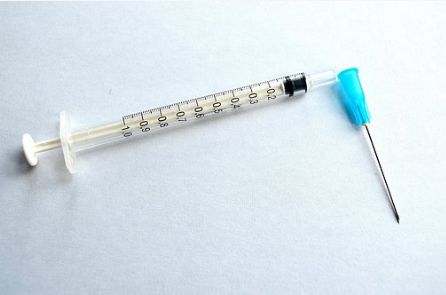Consequences of Not Treating STIs
The consequences of not treating STIs can be devastating. For example, chlamydia can be easily treated with medications, but if it’s not caught in time, it can lead to pelvic inflammatory disease (PID), which can lead to infertility and chronic pelvic pain. Gonorrhea can be treated if found in time, but it can lead to PID. If left untreated, it can also lead to HIV infections and even death.

STIs are spread through unprotected vaginal and anal sex
Unprotected anal and vaginal sex is one of the most common ways to spread many STIs. HIV, hepatitis A, and Shigella are just a few examples. Some of these infections are also spread through the use of shared needles or other items that come in contact with body fluids. Fortunately, there are some ways to protect yourself and lower your risk.
The prevalence of STDs increases after unprotected anal intercourse with a partner who has a history of STIs. A study in women revealed that women aged 30 to 39 who engaged in unprotected anal intercourse were more likely to develop an STD than those who did not. While this practice is associated with higher rates of STD infection in women, it is not associated with HIV infection.
While unprotected anal and vaginal sex is the most common route to contracting an STI, there are other ways to avoid this infection. Using condoms during oral sex lowers the risk of infection.
Chlamydia is another common STI. It can occur in the vagina or anal region, but it can also spread through skin-to-skin contact. These STIs are usually passed to a partner through sexual contact but can also be passed through blood transfusions or shared needles. Although these infections are typically not contagious, they can still lead to complications.
Antibiotics may help prevent or cure most STIs. However, there are no cures for all STIs, and some can be passed on to a new partner. Delaying treatment can lead to long-term complications, including infertility and pelvic inflammatory disease. Untreated gonorrhea can even lead to ectopic pregnancy.
Many STIs do not have symptoms. However, it is important to consult your health care provider about your risk and get tested. Testing is routine and easy and is much better than risking serious health problems. If you have multiple sexual partners, you may also want to get tested for syphilis or HIV. During an examination, cultures are often performed to determine if you have an infection.
In addition to vaginal sex, STIs are also spread through oral and anal kissing. Kissing, while considered low risk, can transfer HPV, syphilis, and herpes. Deep kissing can also transfer gonorrhea. However, it is uncommon to pass gonorrhea through oral sex.
Herpes is a very common sexually transmitted infection. It occurs around the mouth as “cold sores” and affects both the vagina and the anus. The infection can be transmitted by direct contact, and symptoms can appear a few days, months, or years after contact. However, it is not a life-threatening illness and is treatable with prescription antibiotics.

STIs are very common but are often not taught in school. Despite this, STI rates continue to rise in the United States. According to the Centers for Disease Control and Prevention (CDC), over 20 million new cases of STIs are reported each year. Almost half of these cases are among young people, but older adults are also at risk. Between 1996 and 2003, STIs in older people doubled.
They can lead to HIV infections
Not treating STIs is a big risk factor for HIV infections. If left untreated, the infection can progress to AIDS, which is a serious and often fatal disease. HIV also damages the immune system, which makes the body more susceptible to infections. It can also result in infertility.
There is some evidence that preventing HIV infections is possible by treating STIs. Using a combination of preventive measures, such as voluntary male circumcision, behaviour change, and emphasis on STI detection, can reduce the risk of HIV. However, mass-treatment of STIs does not seem to be beneficial.
Not treating STIs can increase the risk for HIV infections, but the link is not clear. Some studies suggest that higher concentrations of HIV increase the risk for HIV transmission. This might be because more HIV is expelled through the body, making the infected person more infectious.
Many STIs are treatable, and some are even curable. Several medications are available to help people manage their symptoms. For example, treatment of genital herpes is an effective way to reduce the risk of HIV transmission. Vaccines are also available to prevent hepatitis A and B.
Taking an antiretroviral drug for HIV infection will reduce the risk of HIV transmission to an HIV-negative partner. The use of antiretroviral drugs has drastically reduced the risk of HIV transmission. The new studies PARTNER1 and PARTNER2 also confirm that antiretroviral drugs are effective at reducing the risk of HIV transmission.
Despite the availability of ART, STIs are a huge public health risk. HIV has decreased in fear, but the prevalence of STIs has increased. Classical STIs remain a huge health burden worldwide and deserve more attention. When neglected, they can lead to HIV infections and other serious complications.
The Centers for Disease Control and Prevention have helpful guidelines on HIV medicines and condom use. These medicines can help people with HIV live longer and have a lower risk of transmitting the disease. Antiretroviral drugs, also known as antiretrovirals, can reduce a person’s viral load to undetectable levels.
If you have a lot of sexual partners or engage in sexual activity without protection, talk to your doctor about your risk for STIs. Tests for these infections are easy and routine. It’s better to avoid potential health issues than risking your life with an STD. STI testing is an essential step in HIV prevention.
While most STIs can be treated, others are incurable. Among those, trichomoniasis is the most common and curable. It’s caused by a parasite that lives in the lower genital tract. If a person doesn’t use condoms, they can get infected with trichomoniasis. Its symptoms vary between men and women and even between different ages. A healthcare provider can diagnose trichomoniasis using a laboratory test.
They can lead to death
If left untreated, sexually transmitted infections (STIs) can lead to death and are a serious public health concern. Symptoms of an STD include itching, discharge, and swollen testicles. They can also lead to other health problems such as infertility or premature birth. They can affect the development of a baby and increase the risk of HIV transmission. Some types of STDs can even cause cancer.

Some STIs can be cured, while others may require lifetime treatment. Several of the most common STIs can be cured with antibiotics, including gonorrhea, chlamydia, and syphilis. But some are resistant to antibiotics, and some types cannot be treated at all.
If you do not treat an STI, you may not be aware of the risks. Although the number of cases of HIV infections has significantly decreased in recent years, there are still 35,000 new cases of this disease in the United States. Untreated STIs can also result in cervical cancer. Regular screening of cells can help detect STIs early and avoid any complications.
STIs affect a diverse range of populations, including women and children, the elderly, and migrant populations. Moreover, STIs are a major cause of death. They are among the leading causes of health care visits and expenditure and are associated with substantial productivity loss. In developing countries, STIs are one of the leading causes of disability-adjusted life years among women of reproductive age.
Because most STIs are asymptomatic, you may not even realize that you have a problem. Whether or not you have symptoms, you should visit a healthcare professional to be sure. Symptoms of STIs vary from mild to severe and affect different parts of the body. Depending on the severity of the infection, symptoms may take days or even months to manifest.
Most STIs are acquired through sexual contact. However, they can also be transmitted through nonsexual routes. These include transverse infections. Even if you do not notice symptoms, untreated STIs can be deadly. Even if you are sexually active, not treating an STI can lead to death.
The burden of STIs continues to rise for many populations in the United States. It continues to hit African American and minority populations the hardest. It has also been noted that the burden of STIs has increased among non-Hispanic White people. Therefore, it is important to treat STIs as quickly as possible.









